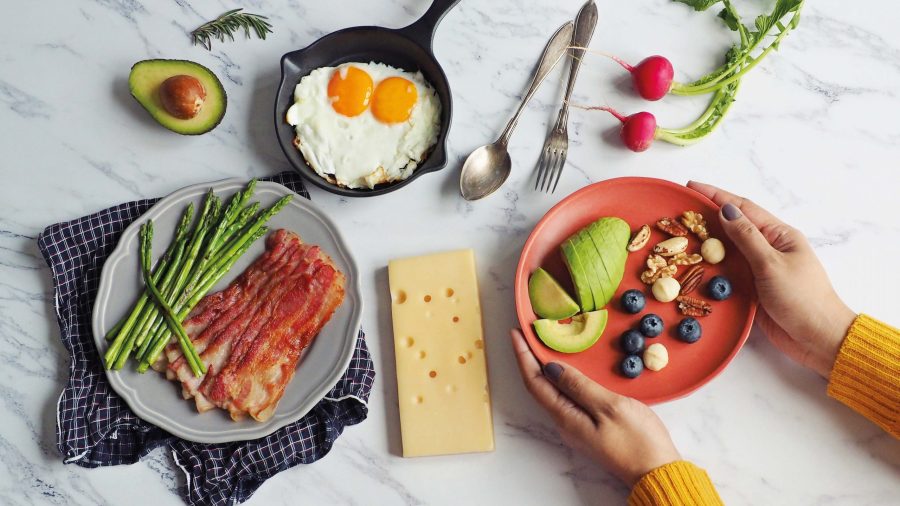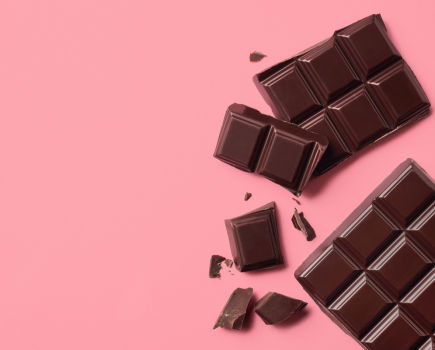The low-carb or keto diet has been huge for a while and for good reason – it works for so many people! Nutritionist and author Sarah Flower shares why it works and along with a low-carb keto diet plan so you can give it a go…
With a low-carb high-fat (LCHF) keto diet plan, you fill up on foods rich in healthy fats while also having moderate amounts of protein. There is no counting calories but there is counting carbs, which should be less than 30g per day. You also cut out all processed food, grains, sugars and starches.
This might sound restrictive, however, due to the diet’s ability to stabilise blood sugar, insulin and related hormones, you actually stop craving food and feel fuller for longer, making it one of the easiest ways to lose weight.
You may think low carb is just a fad when it comes to diets, but you may be surprised to know it has been recommended by doctors for the treatment of diabetes and obesity-related illnesses for more than 100 years. Known for years as sugar diabetes, it made sense that you had to cut out the sugar.
And it’s no surprise to anyone that today’s Western diet is highly processed, high in inflammatory oils (processed) and high in sugars. Sugar is a basic term and does not just mean the white stuff you add to a cup of tea.
In metabolic terms, sugar refers to food that converts inside the body to glucose. Foods that break down into glucose are carbohydrates (refined and complex). This glucose must be either used as energy or stored as fat, and it’s the role of insulin to control where the glucose goes.
When you eat a diet high in carbs, you are constantly calling on insulin and, eventually, it stops listening. Your cells then become saturated in the sugars, and the insulin struggles to push it into your cells.
The current medical approach is to give medication (insulin) to help push more glucose into the cell, but it’s far better to just cut down on the sugar you eat.
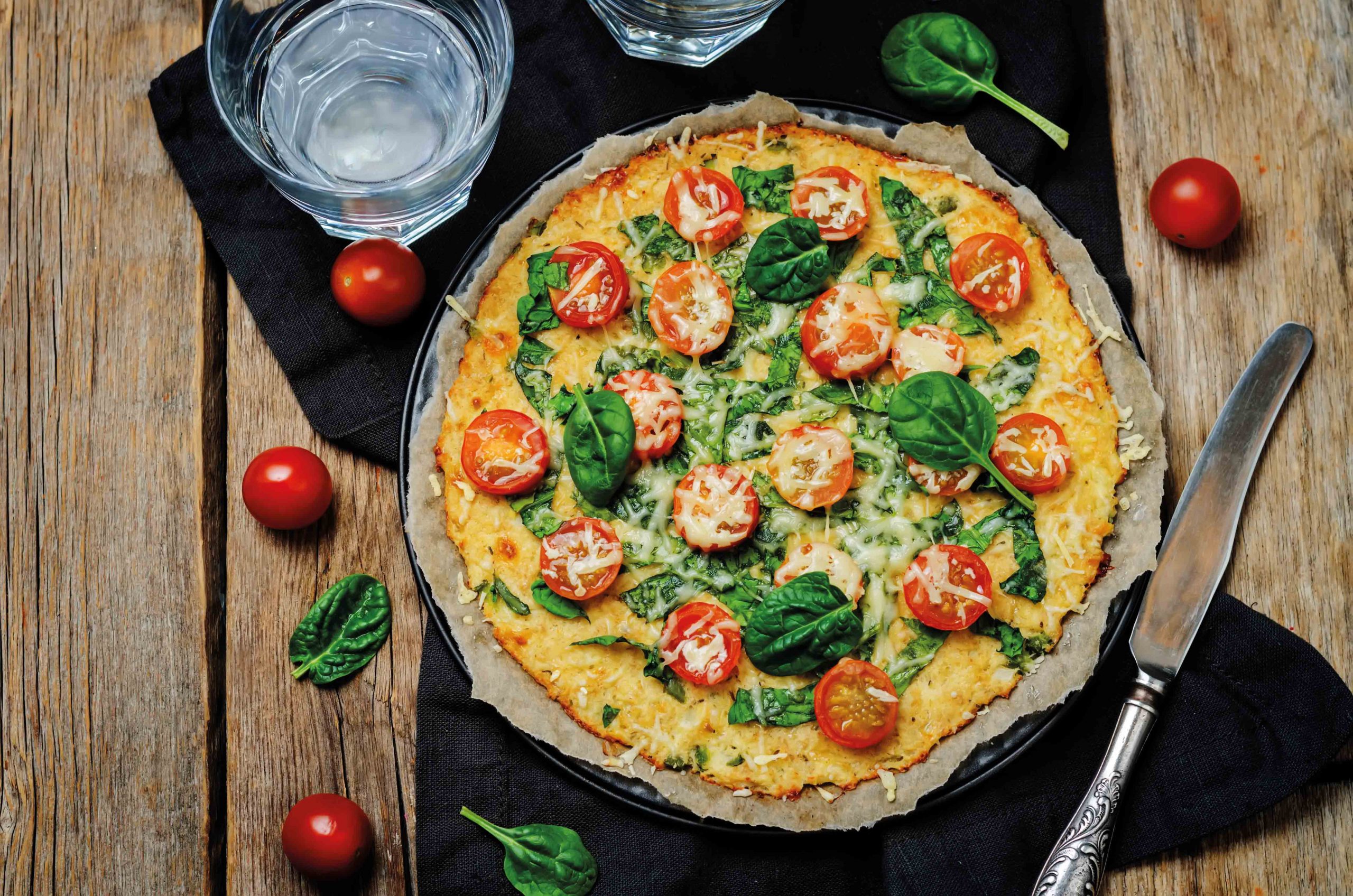
Dieting myths: debunked
Obesity is not caused by eating fat
A high sugar/carbohydrate diet stimulates your insulin response, and this pushes the glucose in your blood to a safe place. This would normally mean storing the glycogen (glucose) in the liver or muscles to be used.
However, due to your saturation of sugar and carbs, if you eat too many, these stores are always full, so the glucose ends up being pushed into fat stores, normally in your visceral fat where it gets locked away.
You rely on the hormone glucagon to release this stored fat to use as fuel but while you are consuming lots of carbs and sugars, the glucagon response is shut off. As you increase insulin, you decrease glucagon.
Calorie counting is not helpful
While calorie counting may work in the short-term, your body soon adapts to the lower level by slowing your metabolism. When you eat less and move more, you become hungry, grumpy and tired, and you will need to reduce your calorie intake further to see any weight loss.
So called ‘Frankenstein foods’ claim to be low calorie and low fat, therefore healthy, but that’s far from the truth. Can 16 jellybeans at 350 calories be a better choice than a salmon salad at 420? A pot of low fat yoghurt can contain up 7 tsp of sugar.
The spikes in your blood sugar put pressure on the body to produce insulin to try to regulate this fluctuation. Focus on the quality of your food, not the quantity of calories.
You don’t need that much sugar
Sugar and fructose are not essential to our health and has no nutritional requirement. It contains calories but has no essential nutrients – just empty calories.
We are led to believe that brown sugar, honey, agave, and maple syrup are better forms as they are more natural and less refined, but sadly our body still sees it as sugar and treats it in exactly the same way.
Glucose is found in every cell, but our bodies can produce this naturally through protein, meaning glucose is not essential to our health.
Fruit juice is not good for you
Fruit is nature’s candy so limit consumption to treats only. Always eat whole fruit as the fibre slows down the digestion and does not flood the liver with fruit sugars (fructose). High fructose diets have been linked to non-alcoholic fatty liver disease, something we are now seeing in children.
Fructose has also been implicated in heart disease, raising the formation of triglycerides and LDL cholesterol. Switch to eating more vegetables and leave fruit as an occasional treat – and avoid fruit juices and fruit smoothies.
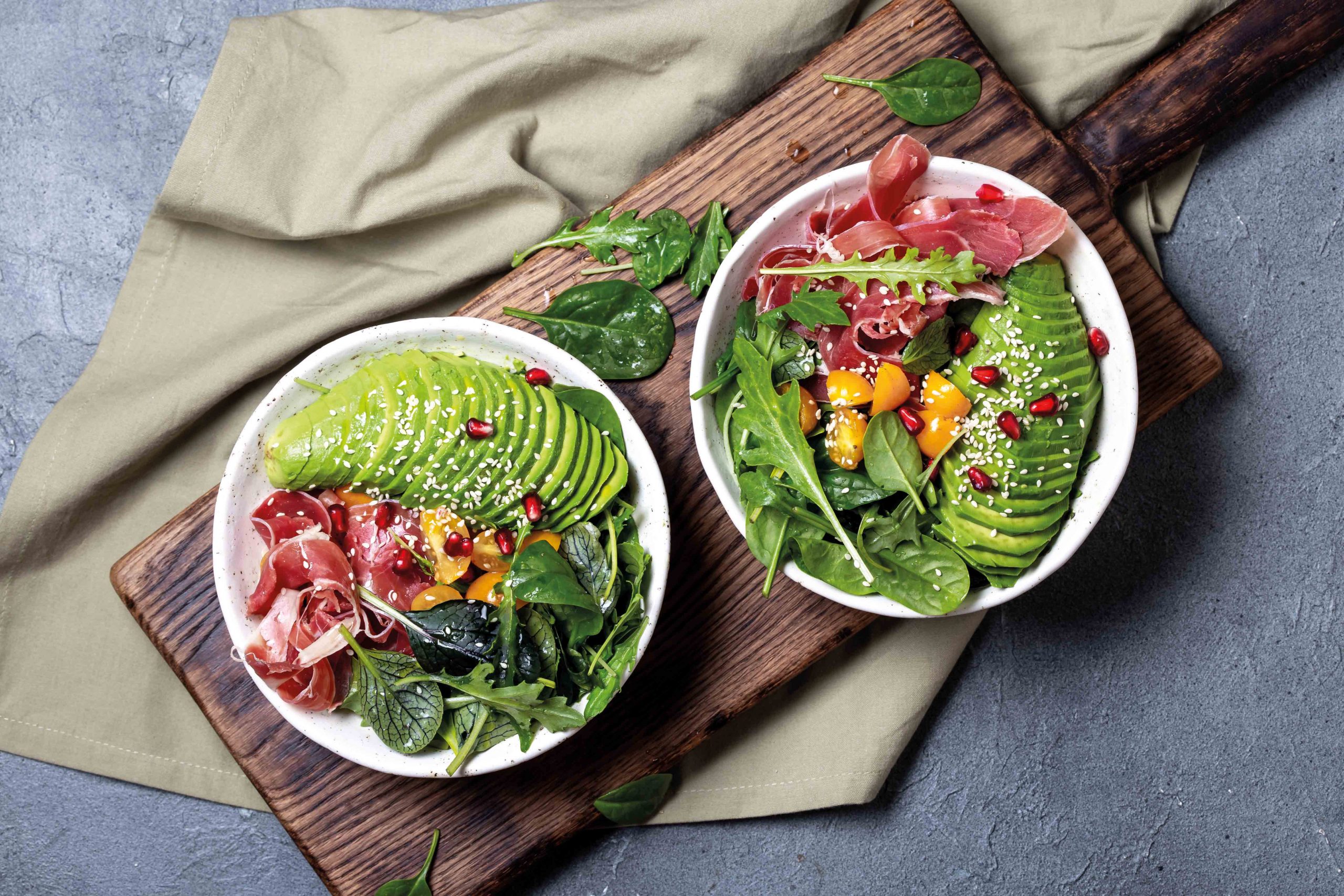
Which fats should I eat on the low-carb keto diet plan?
Research shows a diet of natural fats does not increase unhealthy cholesterol – it can be protective. It’s important to keep up your intake of fat, not only to prevent inflammation but also to prevent or reverse insulin resistance.
But you cannot follow a low-carb and low-fat diet at the same time, as you would struggle to maintain it and start feeling poorly, so stick to the following guidelines:
- Fats to avoid: Processed vegetable and seed oils including sunflower, rapeseed (also called canola), corn and sesame; margarines, vegetable shortenings and all butter substitutes.
- Fats to increase: Real butter, coconut oil, duck and goose fat, avocados, nuts, cream, full-fat milk and full-fat yoghurt. These fats are in their natural state and are stable.
- If you prefer liquid oil to cook with, choose good quality olive or avocado oil, however, these are less stable at high heats, meaning they burn and oxidise, which ages your body, so it’s better to save them for dressings. Also buy good quality meat and eat the fat.
Keto-friendly low-carb food swaps…
The following traditional meals are easy to switch into low-carb versions with Sarah’s simple tweaks…
Traditional meal: |
Low carb swap |
| Spaghetti Bolognese | Switch spaghetti for spiralised courgette. |
| Curry with rice | Switch rice for broccoli or cauliflower rice. |
| Roast dinner | Avoid potatoes but fill up on extra veggies + meat. |
| Pizza | You can make a LCHF pizza with a cauliflower base or even courgette bases. |
| BBQ burgers | You can make some amazing LCHF, grain-free buns or ditch the bun and have extra salad. |
| Chilli con carne | Omit the red kidney beans. Serve with broccoli or cauliflower rice. You can also make tacos from Parmesan. |
| Lasagne | Swap lasagne/pasta sheets for strips of courgette, aubergine, butternuts squash, cabbage leaves or even bacon. |
| Mashed potato | Have cauliflower mash instead. Made with lots of cheese and butter, it’s amazing! Use as a topping for shepherd’s pie or serve with a hearty casserole. You can also mash swede, turnip or celeriac. |
| Breaded items such as chicken nuggets or fish | Make your own – dip first in beaten egg then coat with ground pork scratchings combined with Parmesan, and bake as usual. |
| Breakfast cereals | If you like the convenience of a cereal, opt for keto granola. Personally, if I am in a hurry, nothing beats a bowl of full-fat yoghurt with a handful of berries and nuts. |
| Crisps | You can make your own crisps with vegetables, such as kale, or opt for salty or spicy nuts. You can also buy crisps made from dehydrated meat and make Parmesan crisps for a cheesy, salty hit. |
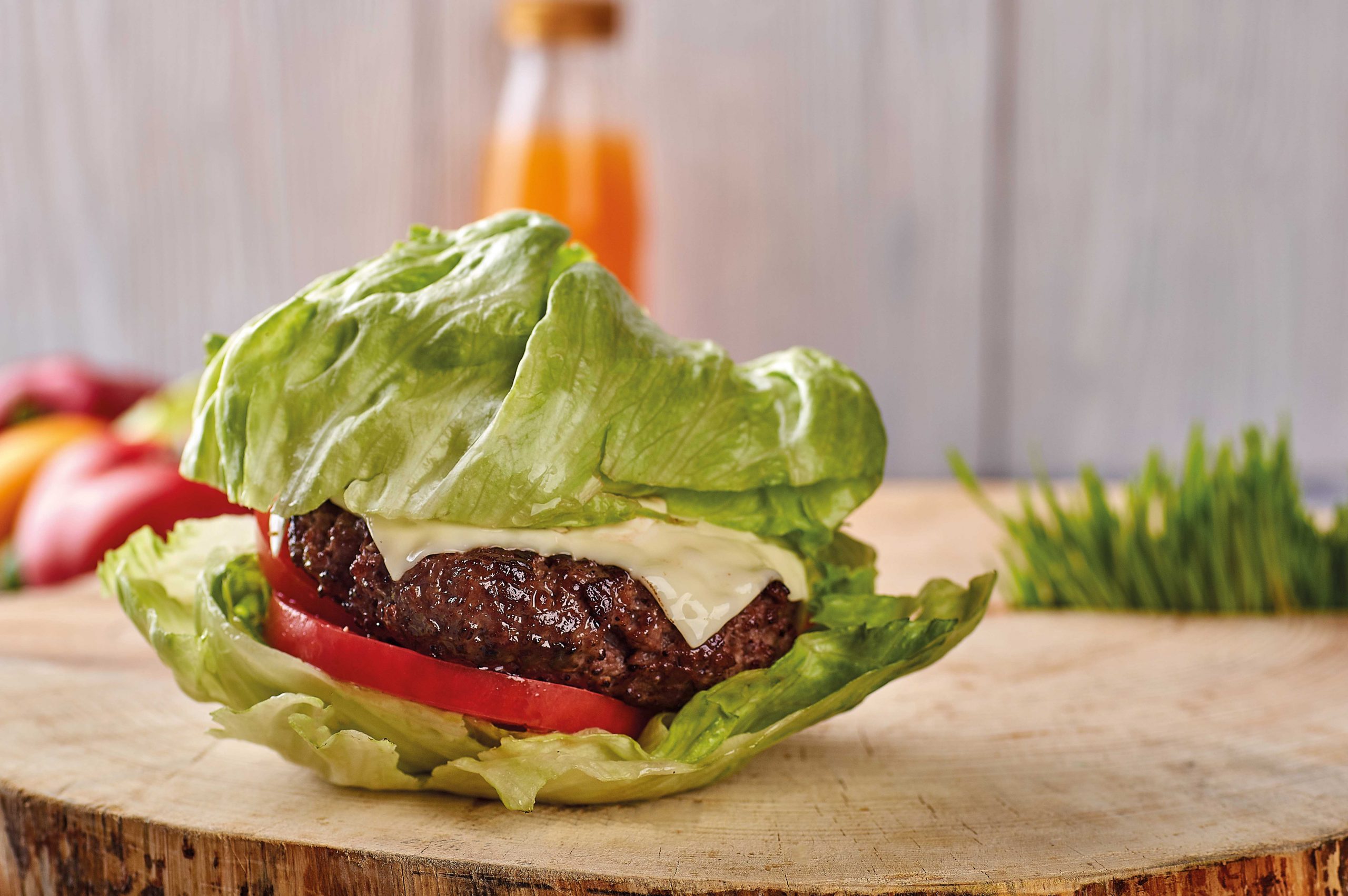
4 ways to make the low-carb keto diet plan work for you
Sarah shares her top tips for succeeding on the low-carb high-fat keto diet plan…
1. Ditch grains
This may at first seem daunting, but it is quite simple. Most of my clients see a dramatic improvement in their health by avoiding grains, including less bloating, IBS, inflammation, and headaches.
We use a variety of flour substitutes so you can still have cakes, bread etc, but just made from scratch with the correct ingredients such as almond flour.
2. Limit fruit
Fruit is nature’s candy, so eat it sparingly. Berries have the least amount of sugar so are the best choice. If you eat plenty of above-ground vegetables, you will not go without vitamins and minerals.
3. Choose low-starch vegetables
These include cauliflower, cabbage, avocado, broccoli, courgette, spinach, asparagus, kale, green beans and Brussels sprouts. Sea vegetables are also low in carbohydrates so these can be enjoyed in abundance.
4. Only eat when hungry
So many of us have got into the habit of snacking throughout the day, which continually stimulates an insulin response. Eating a low-carb, high-fat diet means you’re not stimulating the hunger/craving hormone ghrelin, so you don’t tend to get as hungry.
As you eat more fat, you will become more satisfied, cravings will diminish, and you’ll stay fuller for longer.
A week in the life of keto: low-carb diet plan
Once you are used to this way of eating, you won’t get hungry as often and might only want 1-2 meals per day. So, although the below suggests three meals plus snacks, you’ll soon find you don’t want all of those and won’t feel so hungry.
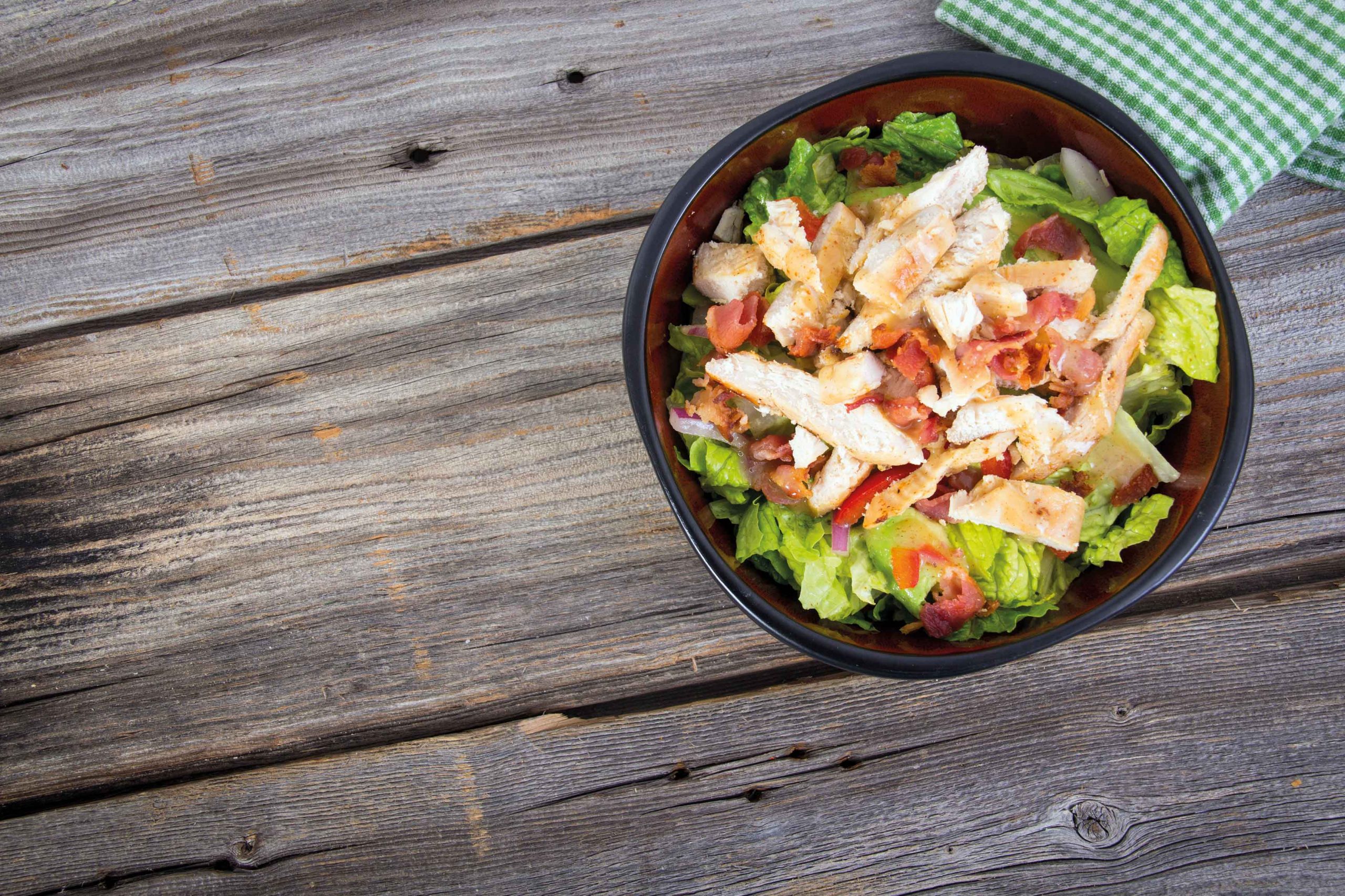
Breakfast options:
- Greek full-fat yoghurt with berries
- Scrambled egg with thick gammon slices on a low-carb bagel
- Poached eggs, sulphite-free bacon and avocado
- Low-carb granola (i.e. nut and seed-based), berries and dollop of yoghurt
- Mini frittata muffins
Lunch options:
- Broccoli and stilton soup with low carb/grain-free roll
- Egg and tuna salad
- Chicken and bacon salad
- Spicy chicken flaxseed wrap with lettuce, avocado and mayo
- Crustless ham and cheese quiche with salad
Main meal options:
- Vegetarian nut roast
- Roast beef and vegetables
- Ham and leek cheesy bake
- KFC-style low-carb chicken with salad
- Courgetti Bolognese
- Beef and mushroom stroganoff
- Haddock, egg and gruyère bake
- Creamy chicken and thyme
Quick keto snack ideas:
These quick and easy snacks are great for having in your fridge and are ideal for when you’re peckish or to take with you to work or on a day out.
- Hard-boiled eggs
- Nuts and seeds (not peanuts)
- Dark chocolate (at least 85% cacao content)
- Full-fat cheese
- Biltong and beef jerky
- Salads
- Olives
- Fish, ie salmon and tuna
- All meats
- Full-fat cream or natural yoghurt with berries
- Nut butters with veg sticks
- Parmesan crisps
- Pork scratchings
Plan ahead: 4 low-carb keto recipes to try
These come from Sarah’s book Eating to Beat Type 2 Diabetes. Visit sarahflower.co.uk to find out more.
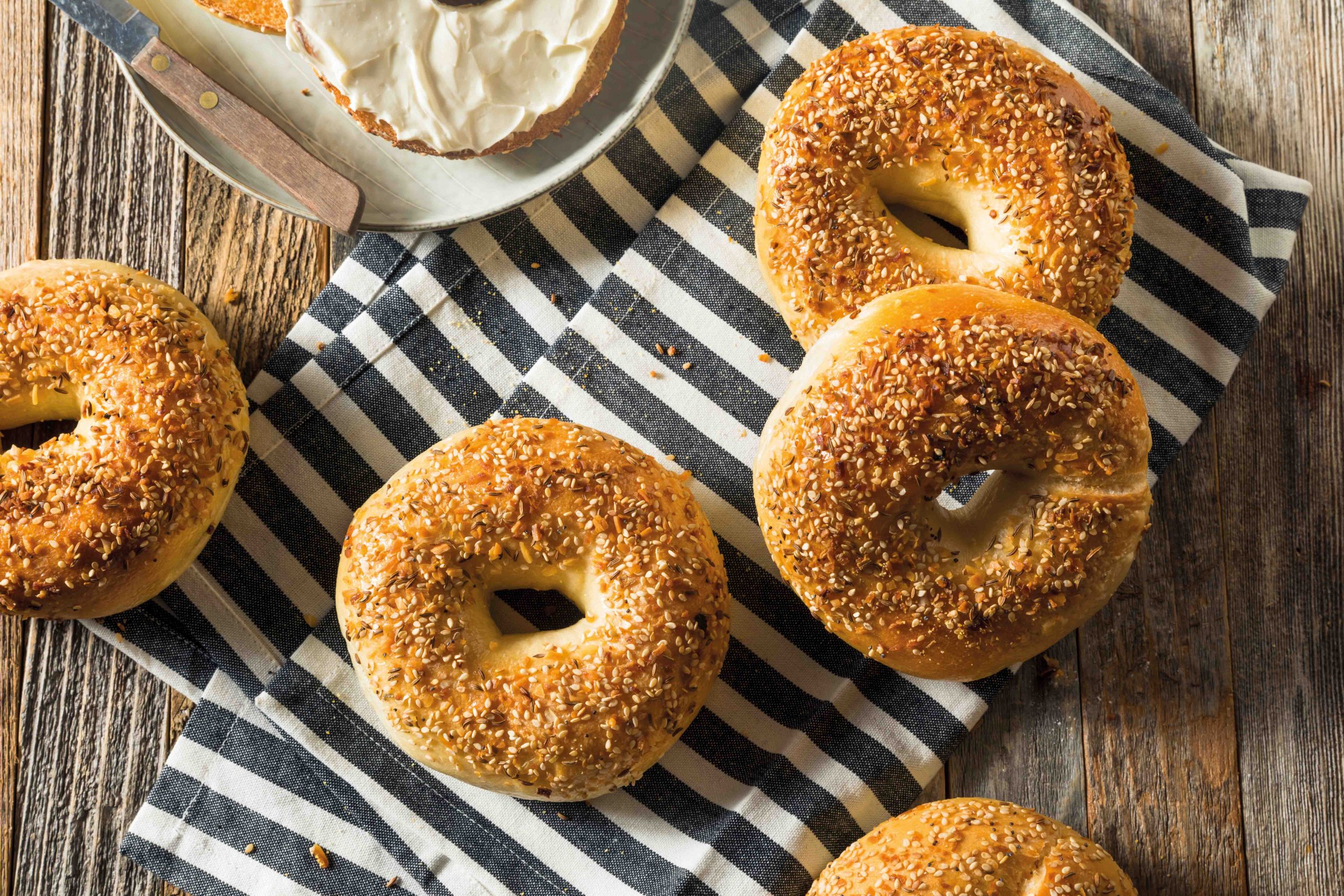
LOW-CARB SAVOURY BAGELS
These are as near as you are going to get when it comes to bagels. They are best cut in half and lightly toasted. Makes 8.
Nutritional information per serving: 158 kcals, 11.6g fat, 2g net carbs, 8.8g protein
Ingredients:
- Eggs 6, large
- Soured cream 80ml
- Baking powder ½ tsp
- Paprika ½ tsp
- Onion granules ½ tsp
- Garlic powder ¼ tsp
- Ground almonds 60g
- Oregano ½ tsp, dried
- Coconut flour 40g
- Butter or coconut oil 2 tsp, for greasing
Method:
- Preheat the oven to 160°C fan/gas 5.
- Beat the eggs with the soured cream, then add all the remaining ingredients, except the butter, stirring well.
- Grease a doughnut pan or a silicon doughnut tray, before pouring the mixture into each ring.
- Bake for 25-30 mins until the bagels are golden on top.
- Leave to cool on a wire rack and store in an airtight container for up to 5 days.
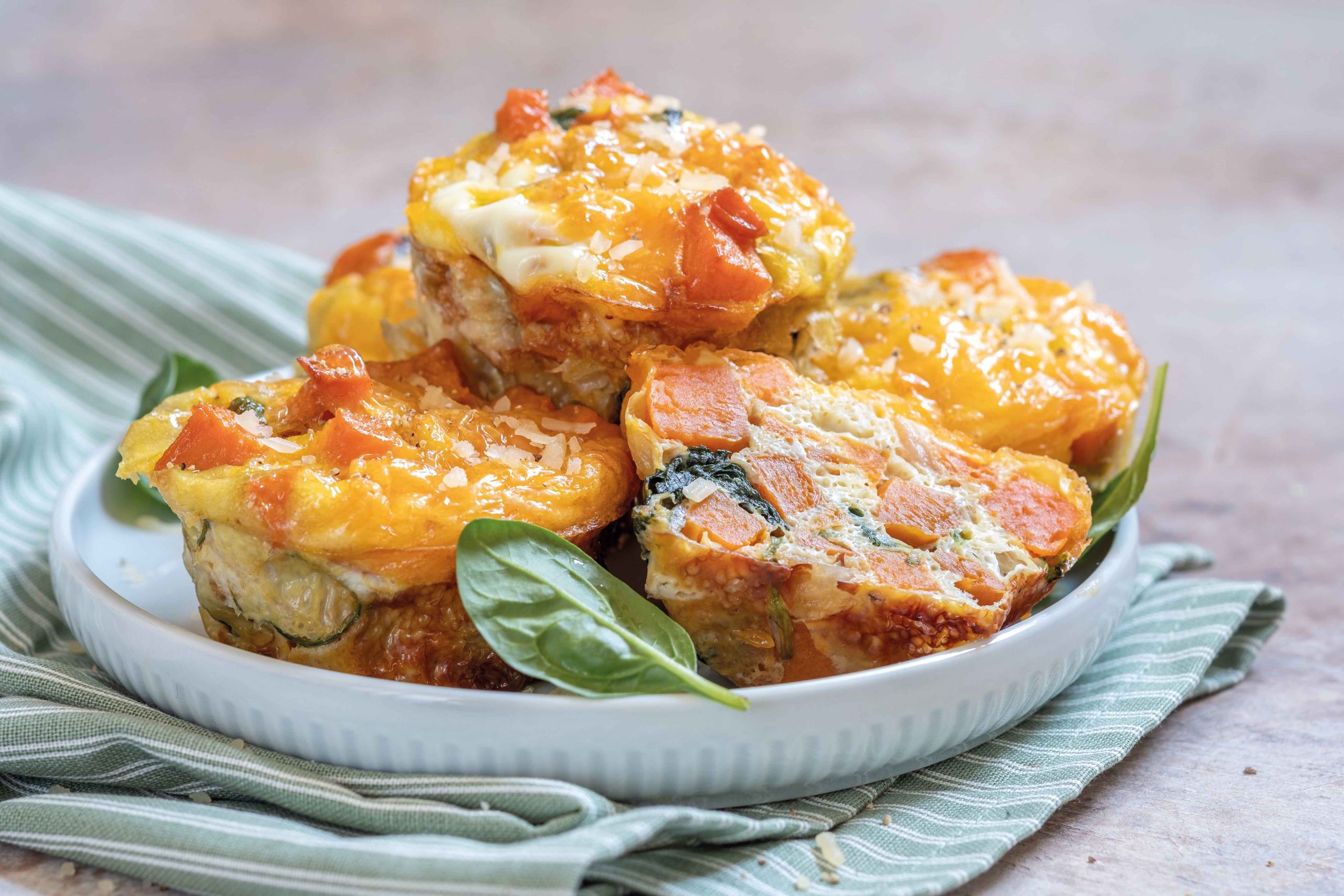
MINI FRITTATA MUFFINS
These are easy to make and great for breakfast or packed lunch. You can even prep these the night
before, ready to pop into the oven in the morning. I add whatever vegetables that need using up, but for the purpose of the nutritional analysis, I have used 60g of spinach and 60g of red onion for this recipe. Makes 6.
Nutritional information per serving: 126 kcals, 9.6g fat, 1.6g net carbs, 8.2g protein
Ingredients:
- Eggs 4, beaten
- Butter 1 tbsp, melted
- Milk 100ml, full fat
- Oregano or mixed herbs 1 tsp, dried
- Vegetables of your choice 6 tbsp, finely chopped
- Cheese of your choice 60g, grated or crumbled
Method:
- Preheat the oven to 170°C fan/gas 6. Grease a muffin tray.
- Put the eggs in a jug with the butter, milk and herbs. Season to taste.
- Spoon the vegetables and cheese into each muffin hole, then pour over the egg mixture until they are two-thirds full.
- Bake for 20 mins until golden. They will rise but sadly drop once cooled. Don’t worry, they still taste divine!
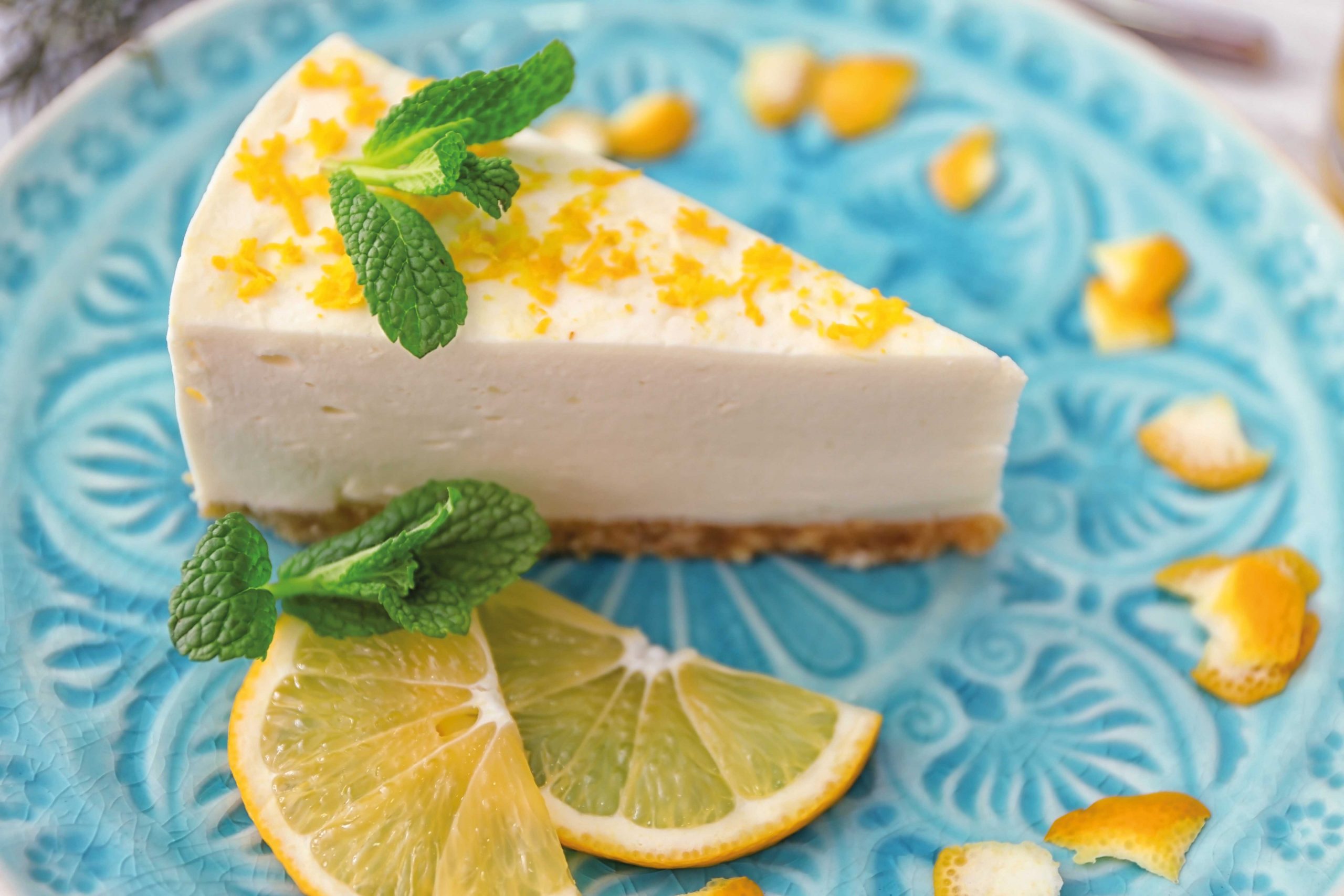
NO-BAKE LEMON CHEESECAKE
This is one of my family’s favourites. I don’t use gelatine as I find it sets to a nice, soft consistency without it. Serves 10
Nutritional information per serving: 512 kcals 50g fat, 3.7g net carbs, 8.6g protein
Ingredients:
- Mixed nuts 300g, such as hazelnuts, brazil, almonds, pecan or macadamia
- Butter 3 tbsp, melted, plus extra for greasing
- Cream cheese 500g, full fat
- Extra thick double cream 300g
- Lemons 3, zested and juiced
Method:
- Grease a 23cm loose-bottomed round tin.
- Put the nuts in a food processor and blend until they resemble breadcrumbs.
- Put in a bowl and stir in the melted butter.
- Spread the nuts out in the tin, pressing them down to form a solid base. Refrigerate for 30 mins to set.
- While the base is chilling, mix the remaining ingredients together in a bowl. Pour this onto the chilled base and spread to level. Refrigerate for at least 3 hrs to set the filling.
- Decorate with sugar-free lemon curd or blueberries.
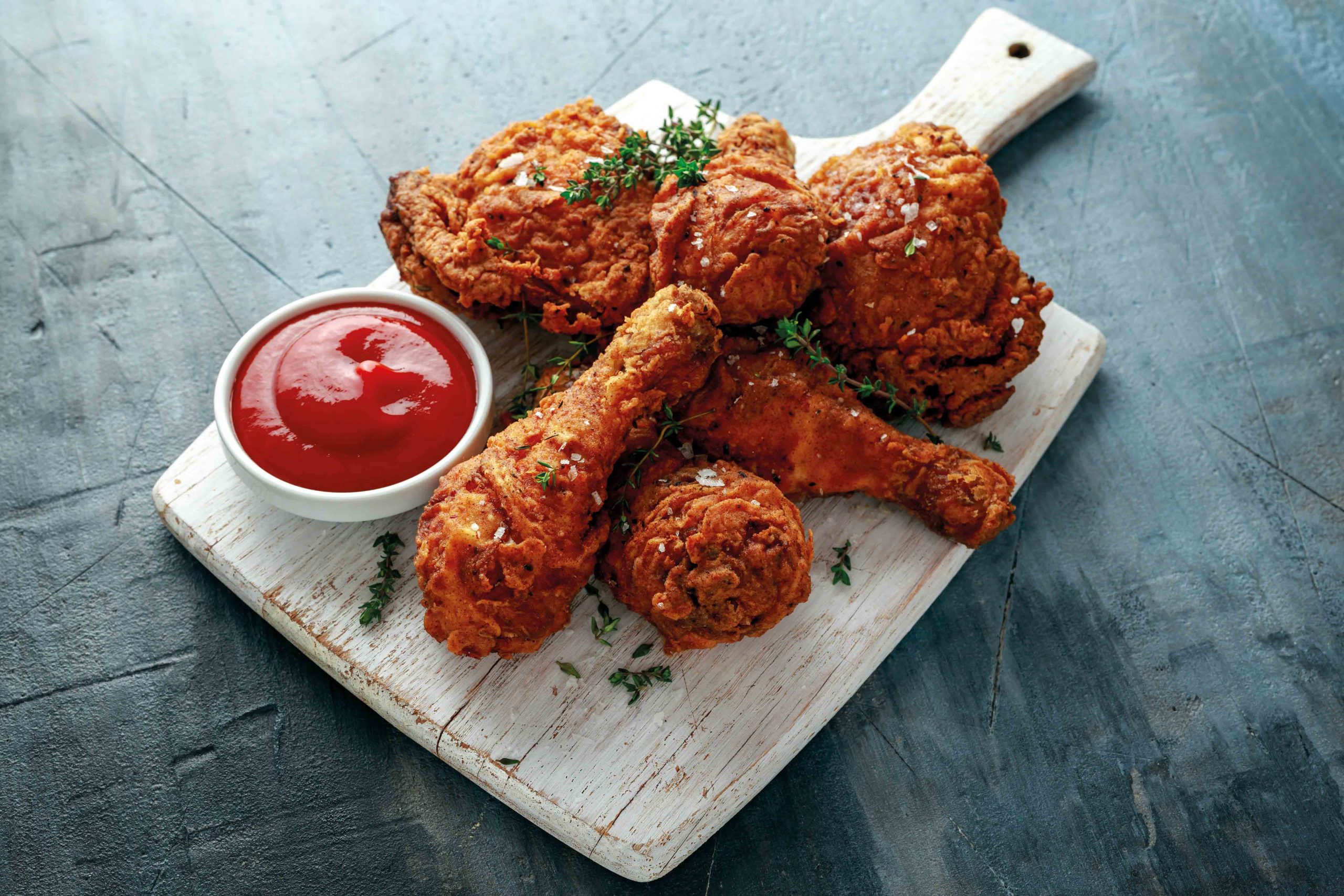
SOUTHERN FRIED CHICKEN
If you love Southern fried chicken, try this. It also makes a great option for packed lunches! Serves 6.
Nutritional information per serving: 273 kcals, 16g fat, 2.3g net carbs, 27.9g protein
Ingredients:
For the spice mix:
- Ground almonds or coconut flour 150g
- Paprika 4 tsp
- Parsley 1 tsp, dried
- Chicken seasoning 3 tsp, sugar-free
- Oregano 1 tsp
- Tarragon ½ tsp
- Thyme 1 tsp
- Garlic powder 1 tsp
- Onion powder ½ tsp
- Celery salt ½ tsp
For the chicken:
- Egg 1, beaten
- Chicken pieces 500g, can be drumsticks, thighs or breasts
Method:
- Preheat the oven to 170°C fan/gas 6.
- To make the spice mix, mix all the ingredients together and put them in a large dish.
- Put the beaten egg in another, separate dish.
- Now for the messy bit: dip the chicken pieces into the egg, then coat in the spice mix, ensuring each piece is evenly covered.
- These are oven cooked, so you want them to crisp up evenly. To do this, lay the chicken on a wire rack before placing this onto a baking sheet. If your oven allows, you can use your grill pan and place it straight into the oven. The idea is to allow the heat and air to circulate all around the chicken, ensuring an even and crisp cook.
- Cook for 20-30 mins, depending on the size of the chicken pieces, until golden and cooked through.

